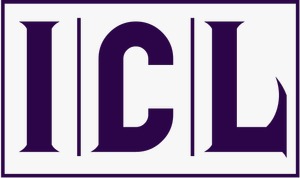Exploring the Relationship between Creativity in Thinking Writing Performance of Graduate Students
Keywords:
Relationship, Creativity, Thinking, Writing performanceAbstract
The main aim of this study is to inspect the possible correlation between creative thinking and writing production in graduate students. Total 80 graduate students were selected by using convenient sampling technique. The students were at a graduate proficiency level. The students were directed to fill a questionnaire on creativity and write an essay on a specific topic. The essays were assessed by expert and trained teachers. The results presented a negative and weak relationship between creative thinking and writing performance. On comparison, the statistical analysis gave a significant variation on the results of both creative thinking and writing. The results indicate weak correlation between creativity in thinking and writing performance of graduate students.
References
Albert, A. and J. Kormos, 2004. Creativity and narrative task performance: An exploratory study. Language Learning, 54(2): 27-31.
Allison, J., 2004. Comments on writing in an english language degree program. Journal of English for Academic Purpose, 3(3): 191-209.
Auzmendi, E., A. Villa and J. Abedi, 1996.Reliability and validity of a newly contrasted multiple- choice creativity instrument. Creativity Research Journal, 9: 89-96.
Bhatti, A. M., Abbas, F., Azim, M. U., Hussain, Z., & Iqbal, M. (2021). Acquisition of Coordination Structure Constraint of graduate learners in Pakistani Public Sector Colleges. International Journal of Innovation, Creativity and Change, 15(3), 724-745.
Bhatti, A. M., Hussain, Z., Azim, M. U., & Gulfam, G. Q. (2020). Perceptions of ESL learners and teachers on writing difficulties in English language learning in Lahore. International Bulletin of Literature and Linguistics, 3(3), 11-24.
Bhatti, A. M., Parveen, S., & Ali, R. (2017). Integration of speaking and writing skills for better grades: perception of graduate students in Pakistani public sector colleges. International Journal of Research and Development in Social Science (IJRDS), 3(2). 1-14.
Bhatti, A. M., Iqbal, M. & Abbas, F. (2021). Methodic Analysis of Language Teaching in Access Microscholarship Program: A New Perspective. Competitive Social Science Research Journal, 2(3), 73–91.
Bhatti, A. M., Hussain, Z., Azim, M. U., & Gulfam, G. Q. (2020). Perceptions of ESL learners and teachers on writing difficulties in English language learning in Lahore. International Bulletin of Literature and Linguistics, 3(3), 11-24.
Brown, H.D., 2001. Teaching by principles: An interactive approach to language pedagogy. 2nd Edn., New York: Longman.
Burton, J. and K. Turvey, 2006.Developing conceptual frameworks for creativity. ICT and Teacher Education, 1(1): 3–13. DOI 10.1016/j.tsc.2005.07.001.
Duffy, B., 1998. Supporting creativity and imagination in the early years. Milton Keynes: Open University Press.
Egbert, J.L. and L.M. Jessup, 1991. Making difficult decisions: Can the michigan test help. Reports – Evaluative /Feasibility, (142): 3-15.
Ely, C.M., 1980. Tolerance of ambiguity and use of second language strategies. Foreign Language Annals, 22: 437- 445.DOI 10.1111/j.1944- 9720.1989.tb02766.x.International Journal of English Language and Literature Studies, 2014, 3(3): 223-233
Filed, A., 2009.Discovering statistics using SPSS. 3rd Edn., London: SAGE Publications.
Guilford, J.P., 1967. Creativity: Yesterday, today and tomorrow. The Journal of Creative Behavior, 1(1): 3–14. DOI 10.1002/j.2162-6057.1967 tb 00002.x.
Hyland, K., 2003. Second language writing. New York: Cambridge University Press.
Jacobs, H.L., S. Zingraf, D. Wormuth, V. Hartfield and J. Hughey, 1981.Testing ESL composition: A practical approach. Rowley, MA: Newburg House.
Kaufman, J.C., 2009. The psychology of creative writing. New York: Cambridge University Press.
Kazamia, V., 1998. How tolerant are Greek learners of foreign language ambiguity. Department of linguistic and phonetics.University of Leeds.
Mc-Lain, D.L., 1993. The MSTAT-1: A new measure of an individual tolerance for ambiguity. Educational and Psychological Measurement, 53: 183 -189.DOI 10.1177/0013164493053001020.
Moore, M.T., 1985. The relationship between the originality of essays and variables in the problem discovering process: A study of creative and non- creative middle school students. Research in the Teaching of English 19(1): 84-95. Available from http://www.eric.ed.gov/contentdelivery/servlet/ERICServlet?accno=ED258186.
O'Neil, F. and J. Abedi, 1996.Reliability and validity of a state metacognitive inventory. Potential for Alternative Assessment, 89(4): 234-245. DOI 10.1080/00220671.1996.9941208.
Otto, I., 1998.The relationship between individual differences in learner creativity and language learning success. TESOL Quarterly, 32(4): 763-773.
Rana, A. M. K., Bhatti, A. M., & Mahmood, M. R., (2020). Inclusion of Islamic Beliefs in Esl Teaching at University Level in Lahore. Al-Qalam, 25(2), 394-415.
Rana, A. M. K., Bhatti, A. M., & Abbas, F. (2020). Perceptions of Punjabi speakers towards English language teaching policies in Pakistan: A systematic approach. Journal of Talent Development and Excellence, 12(1), 6257-6272.
Rana, A. M. K., & Bhatti, A. M. (2020). Attitudes of elementary teachers in Lahore towards professional development. Journal of Elementary Education, 30(1), 84-106.
Runco, M.A., 2004. Creativity. Annual Review of Psychology, 55: 657-687. Available from http://dx.doi.org/10.1146/annurevpsych.55.090902.141502.pdf.
Shahzadi, K., Irfan, H., & Bhatti, A. M. (2022). Fun activities in the learning process. Asia Journal of Management and Social Science, 1(02), 8-12.
Shahzadi, K., Irfan, H., & Bhatti, A. M. (2022). Cultural and linguistic diversity in ESL learning to Pakistani university students: World English perspective. Jahan-e-Tehqeeq, 5(2), 239-249.
Torrence, E.P., 1966. Torrance tests of creative thinking. Princeton, New Jersey: Personnel Press.
Zaheer, H., Azim, M. A., Bhatti, A. M., & Gulfam, G. Q. (2021). The Sociolinguistic Impact of Sexist Hate Speech in Gender Discriminatory Pictorial Memes on Facebook. Competitive Social Science Research Journal, 2(4), 212–222.
Downloads
Published
How to Cite
Issue
Section
License

This work is licensed under a Creative Commons Attribution-NonCommercial-NoDerivatives 4.0 International License.

